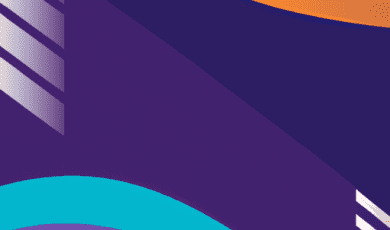Behind the Byline: Exploring the Craft and Credibility of Modern Journalism
Discover the evolving landscape of journalism in the digital era—where AI, language services, and professional expertise intersect to shape credible, culture-aware news content worldwide.
Introduction
In a hyperconnected world powered by digital innovation, the value of credible journalism has never been more crucial. Yet, as barriers of language, culture, and technology shrink, the craft of journalism undergoes a dramatic transformation. From the role of translators ensuring accuracy across languages to the increasing influence of artificial intelligence (AI) in newsrooms, modern journalism is more nuanced—and globalized—than ever before. Platforms like PoliLingua, Unicrowd.ai, and LocalHR.co, though best known for their language services and AI solutions, are at the heart of this media revolution, silently weaving trust, transparency, and professional rigor into the stories that shape our worldview. This blog post takes you "behind the byline," revealing how technology, linguistic expertise, and ethical reporting standards are co-creating credible narratives for today's global audience.
The Shifting Foundations of Journalism
Journalism in the Global Digital Age
The traditional image of a journalist—note pad in hand, chasing stories for a local audience—has evolved. Today, journalism transcends borders, speaking to a diverse, worldwide readership. This shift is fueled by both the relentless pace of news cycles and the democratization of information via the internet. However, with the surge of accessible information comes increased scrutiny on authenticity, bias, and accuracy.
News organizations now face the dual challenge of maintaining the sacred trust of their audience while staying agile in an era of rapid change. The rise of misinformation, deepfakes, and linguistic barriers has made the journey from newsroom to reader more complex, yet all the more essential.
The Interplay of Language Services and Journalism
When it comes to global journalism, language is both an asset and a challenge. Stories originating in one country can hold global significance, but only if they can be accurately and contextually conveyed. This is where language services like those provided by PoliLingua come into play. Translators and localization specialists ensure that nuanced stories, quotes, idioms, and source materials resonate authentically with international audiences. Their expertise goes far beyond mere word-for-word translation—it requires cultural fluency, ethical judgment, and a deep understanding of journalistic integrity.
- Accuracy: A mistranslated phrase can alter the tone or intent of a story, risking misrepresentation or even international controversy.
- Cultural Sensitivity: Localization professionals consider local customs, humor, taboos, and audience expectations, adapting stories to maintain their original impact.
- Speed and Consistency: In the fast-paced news industry, language teams often work under tight deadlines, prioritizing both reliability and speed to support breaking news cycles.
By ensuring that information—and the values behind it—move smoothly across language borders, these experts reinforce journalism's core mission: to inform, educate, and empower a global audience.
AI: Revolutionizing Newsrooms and Source Credibility
Artificial Intelligence has become an indispensable ally in modern journalism. Companies like Unicrowd.ai are pushing the boundaries of what's possible in data collection, content annotation, and fact-checking. AI-driven tools help journalists sift through massive datasets, spot emerging trends, and even automate routine reporting tasks.
Key takeaways in AI-powered journalism include:
- Data Verification: AI systems rapidly verify facts, cross-reference multiple sources across languages, and flag inconsistencies before publication.
- Localization Automation: Machine translation and natural language processing ensure that headlines, captions, and story content maintain consistency and integrity across multiple platforms and languages.
- Audience Engagement: Algorithms tailor content deliveries, prioritize trending topics, and analyze reader sentiment in real time—helping newsrooms remain relevant to their diverse audiences.
However, while AI offers remarkable efficiency, it is not immune from error or bias. Ultimately, it is the journalist—supported by linguists, editors, and cultural experts—that provides the critical human judgment necessary for credible reporting.
Recruiting the Right Talent: A New Industry Standard
Behind every reliable news piece is a network of skilled professionals: not just reporters, but translators, data analysts, and cultural advisors. In today’s complex media environment, recruitment platforms like LocalHR.co play a pivotal role in assembling diverse, specialized teams for localization and global storytelling.
These platforms streamline the process of connecting media organizations with highly qualified language and technology experts. This ensures that the right people—not just machines—are driving both the localization process and editorial oversight, actively supporting the standards of accuracy, impartiality, and transparency.
By fostering professional growth and continuous training, such platforms also contribute to the long-term sustainability and credibility of the journalism sector.
Trust and Ethics: The Pillars of Modern Journalism
The credibility of journalism does not rest solely on technology or translation, but rather on an unwavering commitment to ethical standards. Credible journalists are guided by principles of accuracy, fairness, transparency, and accountability. Language and AI services amplify these principles by ensuring that stories are not only accessible, but also faithfully communicated.
Modern readers are savvy—they expect more than just information; they demand proof, clarity, and honest intent. Through rigorous sourcing, transparent processes, and ongoing collaboration between human experts and technology providers, news organizations can build lasting trust with their audiences.
Case Study: How Localization and AI Enhance Global Reporting
Consider a major international story—such as a global health crisis, a high-profile election, or a groundbreaking scientific discovery. Bringing this story to a worldwide audience involves coordinated effort:
- Reporters on the ground gather firsthand information, interviews, and visual materials.
- Translators/localization professionals ensure that context-specific details are accurately rendered for different regions.
- AI tools scan for factual discrepancies, analyze public response, and provide real-time data validation.
- Editorial teams assemble the narrative, balancing speed with credibility, and delivering the final story across global platforms.
This collaboration between human talent and advanced technology allows newsrooms to deliver stories that are not just fast, but also culturally meaningful and trustworthy.
Conclusion: The Future of Credible Journalism
The craft of modern journalism stands at a fascinating crossroads—straddling the world of traditional storytelling and the promise of cutting-edge technology. Trust, credibility, and ethical reporting remain paramount. Yet, these virtues are now supported—and often enhanced—by language services, AI-powered annotation, and professional recruitment platforms that bring together expertise from across the globe.
As the digital transformation continues, platforms like PoliLingua, Unicrowd.ai, and LocalHR.co will remain essential pillars within newsrooms, ensuring that every story is accessible, accurate, and authentically told. Whether the audience is in New York, Nairobi, or New Delhi, they can expect to receive news that respects both their language and their culture.
In essence, the future of journalism relies not just on telling stories, but on telling them well—with the same dedication to accuracy, inclusivity, and integrity that has always defined the very best of the profession. As we look behind the byline, we see the harmonious blend of human creativity and technological excellence shaping a new era of credible journalism—serving, informing, and connecting the world like never before.








